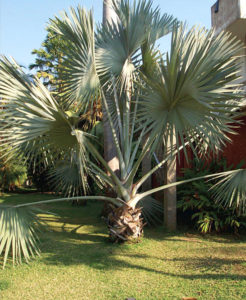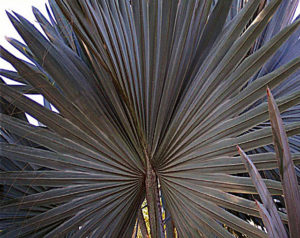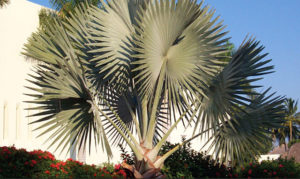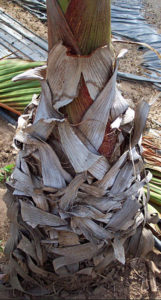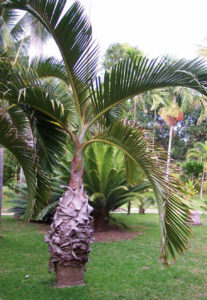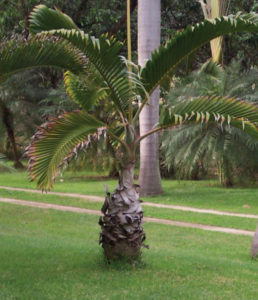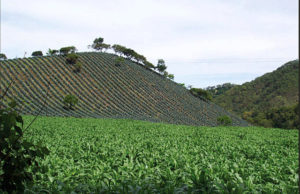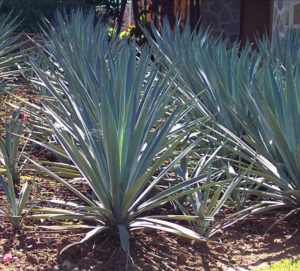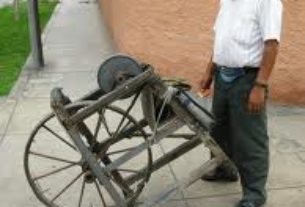Three beautiful options for your tropical garden in Mexico are the bismark palm, bottle palm and blue agave.
Bismark Palm (Bismarckia nobilis)
Family: Areceae
Use: The bismark palm is prized as a landscape specimen, singly or in rows. Its height can vary from 40 to 70 feet, and branched reach up to 15 feet across, with a crown of spiky fronds. Individual leaves may measure more than 36 inches in width.
Cultivation: This palm thrives in both sun or part shade and likes sandy soil. It is drought tolerant and salt resistant. Once established, the bismark palm does not need fertilizer, and this variety does not attract pests. Prune it with care, avoiding damage to the lower trunk. Because of its deep taproot, it does not transplant well.
Propagation: From seed.
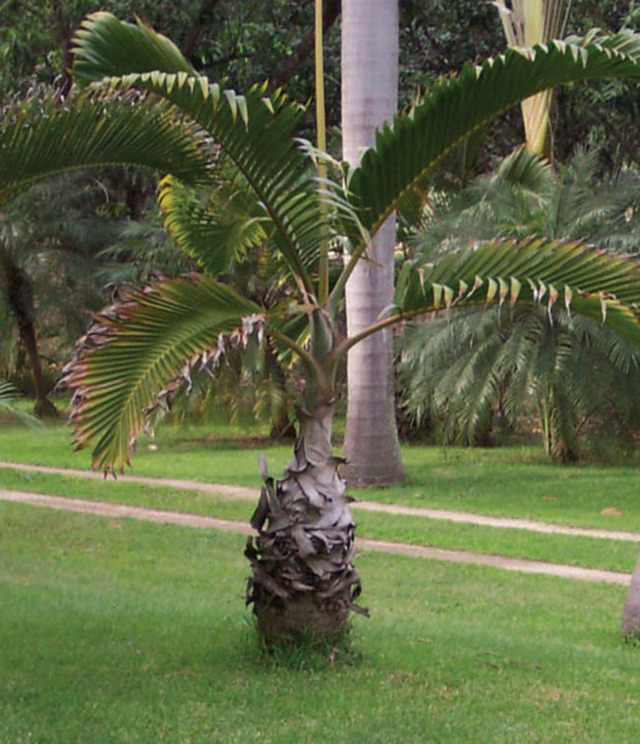
Bottle Palm (Hyophorbe lagenicaulis)
Family: Arecaceae
Use: Because of its unusual shape and moderate size of 12 to15 feet in height, the bottle palm is a novel choice for landscape interest. The grey trunk grows to 2 feet in diameter and is swollen into the bottle-like shape that gives it its name. The canopy of 4 to 8 elegant leaves – each 9 to 12 feet long – looks striking.
Flowers: Cream male and female flowers appear from the same inflorescence. The flower stalks come from below the crown shaft, and are followed by black oval fruit of 1.5 inches in length.
Cultivation: Semi-desert in origin, this slow-growing palm thrives in sun to part shade. It is highly salt tolerant, and can withstand some drought, although for best growth it requires regular moderate water. Avoid overwatering.
Propagation: The bottle palm is grown from seed. Transplant after one year.
Blue Agave (Agave tequilana weber azul )
Family: Liliaceae
This succulent (not a cactus) is related to the lily and the amaryllis.
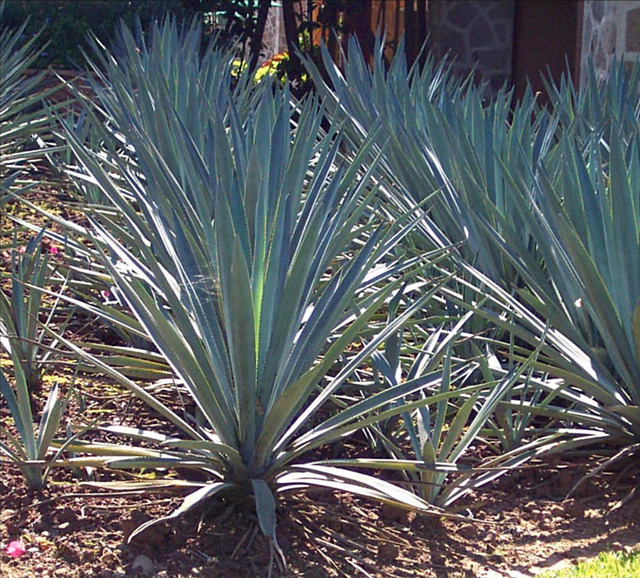
Use: There are 250 to 300 different agaves, grown from the southwest U.S. to the South American tropics. Of these, the blue agave, shown, is used solely in the production of tequila, which is made from the heart, or piña. The remainder of the plant has no other use, although they are at times used in decorative plantings due to their striking appearance. The records indicate the the Aztecs had a multitude of uses for the blue agave, including soap, clothing, and string.
Flowers: In the wild, the piña, or core sends up a shoot that bears small yellow flowers at its top.
Cultivation: Blue agave grows best above 5,000 feet, where the mature plant at about eight years may have leaves that are 5 to 8 feet tall and measures 7to 12 feet in diameter. The plant is watered only by rainfall during the rainy season, and lives about 8 to15 years. Some say it grows best on volcanic slopes. Pruning the points of the leaves encourages the piña to grow larger. The piña may reach a weight of 500 lbs, but most average 200 lbs at harvest. Hand weeding is often used, but some growers may spray with pesticides.
Propagation: The blue agave is grown from shoots taken during the beginning of the rainy season during the plant’s 4th to 6th year.

